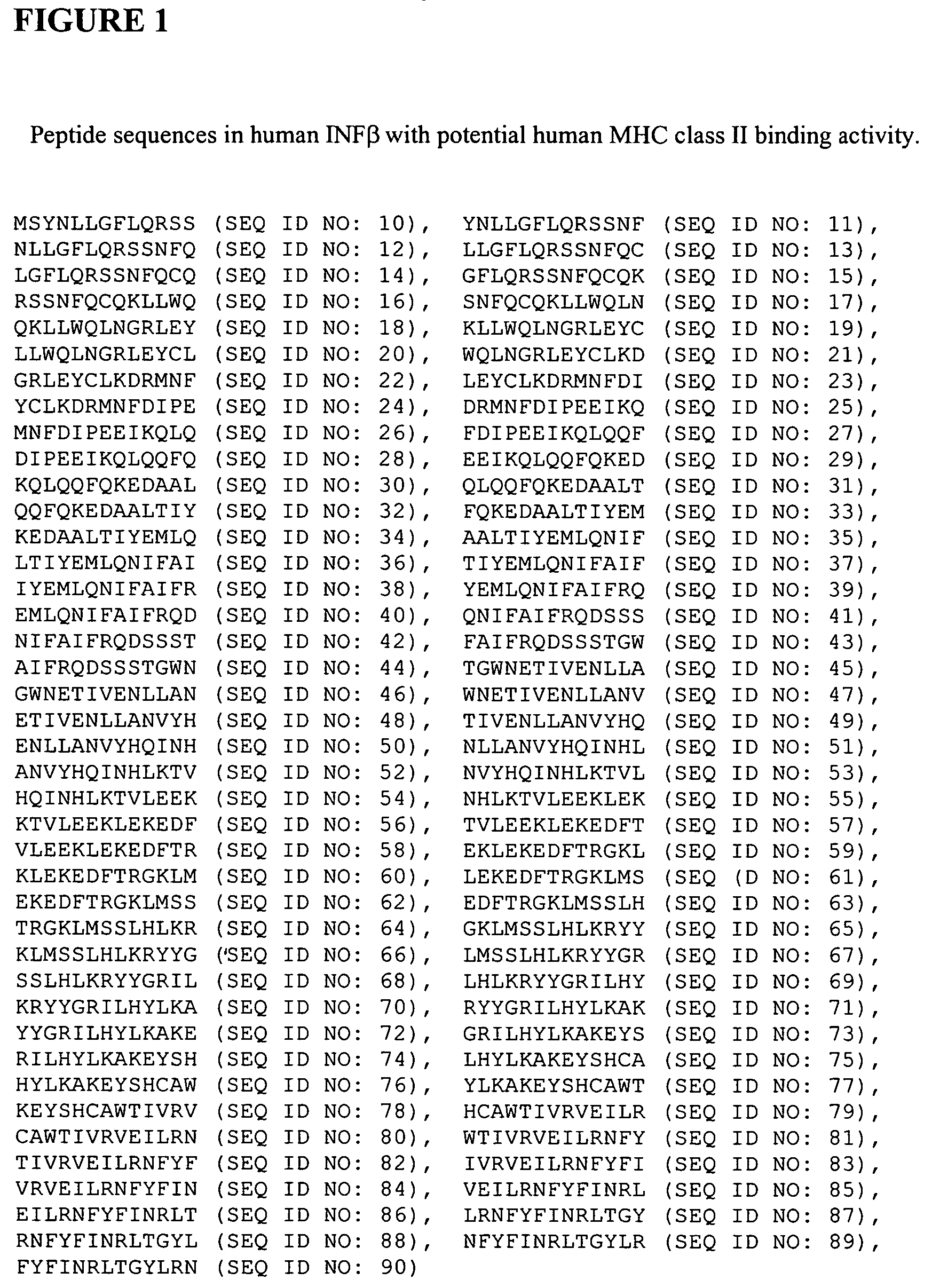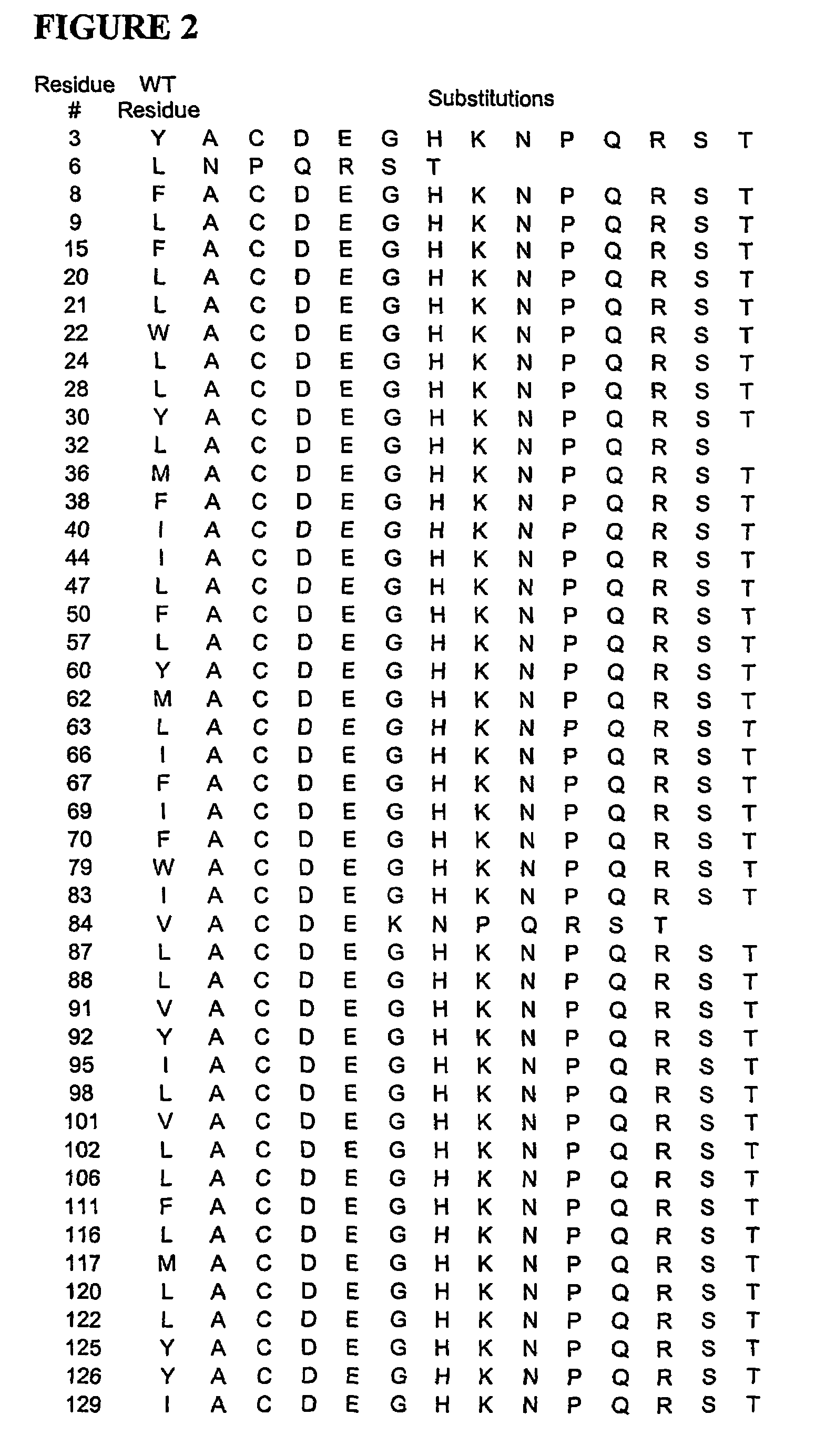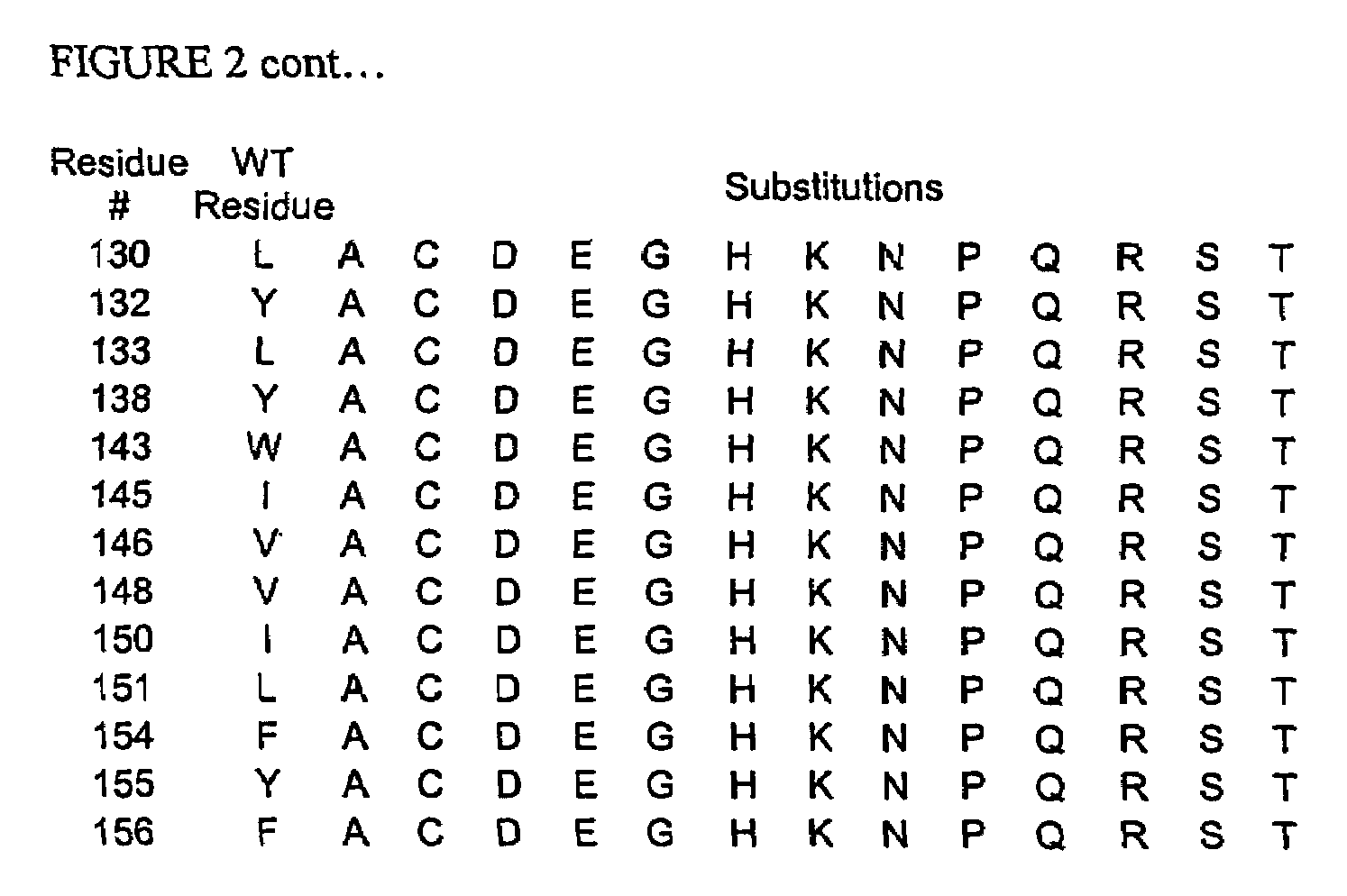Modified interferon beta with reduced immunogenicity
a technology of interferon beta and immunogenicity, applied in the field of polypeptides, can solve the problem of limited therapeutic protein efficacy
- Summary
- Abstract
- Description
- Claims
- Application Information
AI Technical Summary
Benefits of technology
Problems solved by technology
Method used
Image
Examples
example 2
[0168]The interaction between MHC, peptide and T-cell receptor (TCR) provides the structural basis for the antigen specificity of T-cell recognition. T-cell proliferation assays test the binding of peptides to MHC and the recognition of MHC / peptide complexes by the TCR. In vitro T-cell proliferation assays of the present example, involve the stimulation of peripheral blood mononuclear cells (PBMCs), containing antigen presenting cells (APCs) and T-cells. Stimulation is conducted in vitro using synthetic peptide antigens, and in some experiments whole protein antigen. Stimulated T-cell proliferation is measured using 3H-thymidine (3H-Thy) and the presence of incorporated 3H-Thy assessed using scintillation counting of washed fixed cells.
[0169]Buffy coats from human blood stored for less than 12 hours were obtained from the National Blood Service (Addenbrooks Hospital, Cambridge, UK). Ficoll-paque was obtained from Amersham Pharmacia Biotech (Amersham, UK). Serum free AIM V media for ...
example 3
[0177]A number of modified IFNβ molecules were made using conventional recombinant DNA techniques. A wild-type IFNβ gene was used both as a control reagent, and a template from which to derive modified genes by site-directed mutagenesis. Wild-type and modified genes were inserted into a eukaryotic expression vector and the recombinant IFNβ proteins expressed as fusion protein with the human immunoglobulin constant region domain. Recombinant proteins were prepared from transiently transfected human embryonic kidney cells and assayed as detailed in EXAMPLE 4.
[0178]In order to obtain expression from human embryonic kidney cells, the wild-type human IFNβ□ gene was obtained from the ATTCC (ATCC accession # 31902) and PCR cloned into vector pd-Cs [Lo, et al (1998), Protein Engineering 11:495]. The pd-Cs vector directs the expression of a fusion protein containing the human immunoglobulin constant region domain. The pd-Cs vector containing the wild-type IFNβ gene was termed pdCs IFNβWT.
[01...
example 4
[0189]Modified interferon molecules of the present invention were tested for their ability to inhibit the growth of human B cell lymphoma line Daudi. The method is broadly as described previously [Mark, D. F. et al (1984) Proc. Natl. Acad. Sci. USA 81: 5662-5666] and involves incubation of Daudi cells with the test interferon. The anti-proliferative effect of the test molecule is measured using a soluble dye substance that undergoes a colour change in the presence of proliferating cells. The induced colour change is measured in a spectrophotometer and any anti-proliferation effect is computed with reference to the colour change recorded in non-treated control cells and cells treated with a standard interferon preparation.
[0190]Briefly, Daudi cells (ATCC # CCL-213) were cultured RPMI 1640 Media supplemented with 100 units / ml Penicillin / 100 ug / ml Streptomycin and 2 mM L-Glutamine and 20% Fetal Bovine Serum (FBS). All media and supplements were from Gibco (Paisley, UK). The day before ...
PUM
| Property | Measurement | Unit |
|---|---|---|
| concentration | aaaaa | aaaaa |
| length | aaaaa | aaaaa |
| structure | aaaaa | aaaaa |
Abstract
Description
Claims
Application Information
 Login to View More
Login to View More - R&D
- Intellectual Property
- Life Sciences
- Materials
- Tech Scout
- Unparalleled Data Quality
- Higher Quality Content
- 60% Fewer Hallucinations
Browse by: Latest US Patents, China's latest patents, Technical Efficacy Thesaurus, Application Domain, Technology Topic, Popular Technical Reports.
© 2025 PatSnap. All rights reserved.Legal|Privacy policy|Modern Slavery Act Transparency Statement|Sitemap|About US| Contact US: help@patsnap.com



